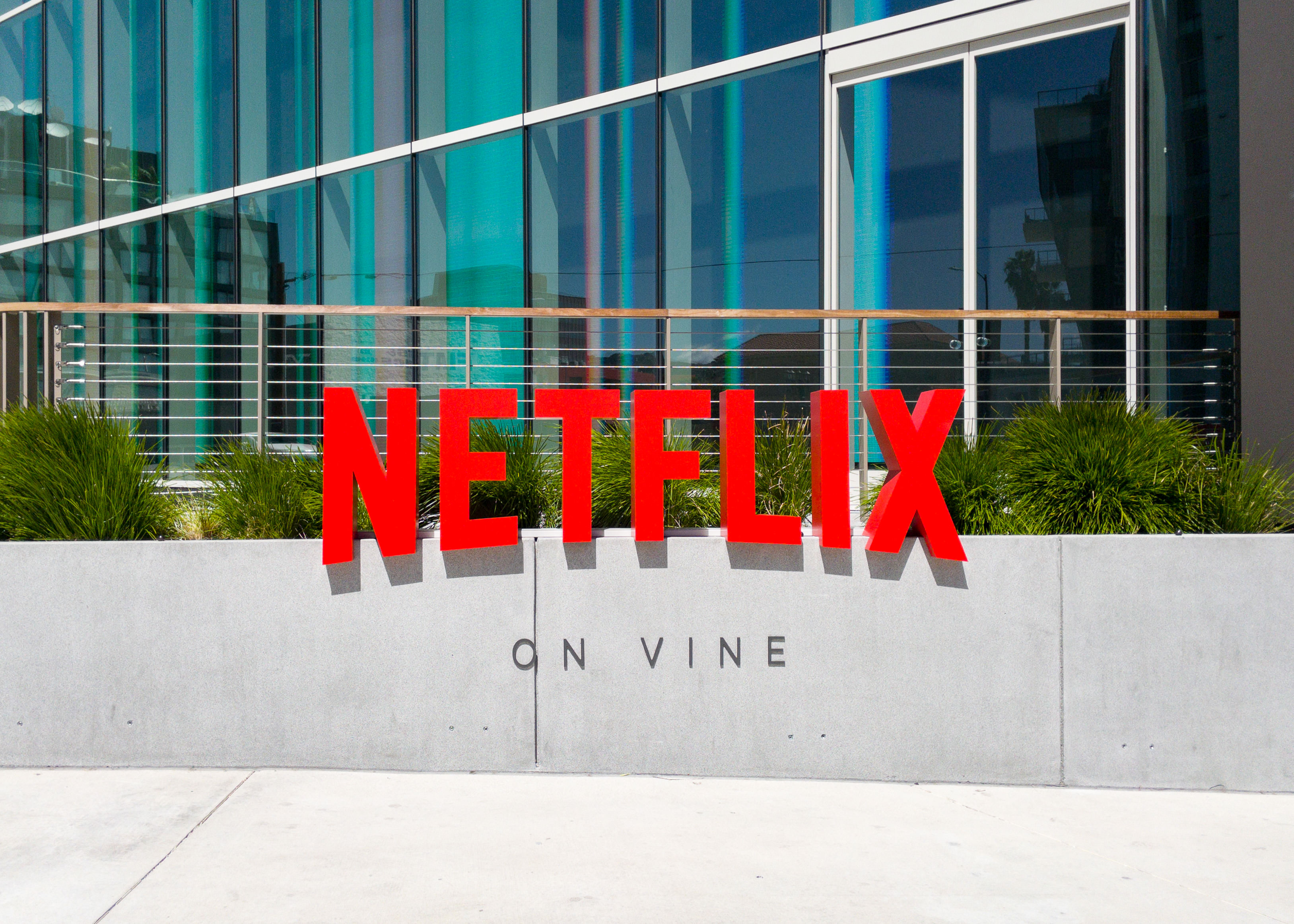Analyst: Adding Commercials Will Boost Netflix Subscribers by 6% and Earnings by 20% in 2025
Steven Cahall of Wells Fargo estimates AVOD to account for 30% of subscribers

Netflix‘s foray into the advertising world will take time to build but will eventually lead to more subscribers and higher earnings, according to a new report from Wells Fargo media analyst Steven Cahall.
In addition to becoming an advertising powerhouse, Cahall sees adding an ad-supported tier increasing Netflix’s total available market for subscribers. In its first-quarter earnings, Netflix reported a loss of 200,000 subscribers, shocking Wall Street and sending the share of Netflix — and others in the streaming business — reeling.
Including cannibalization of subscription video-on-demand subscribers choosing the lower-priced ad-supported VOD product, Cahall estimates that by adding AVOD, Netflix can increase its subscriber count to 272 million by 2025, 6% higher than previous estimates.
Also: Why Netflix’s Struggles Don’t Spell Doom for Streaming (Guest Blog)
Netflix will have 24 million AVOD subs in 2023, 67 million in 2024 and 101 million by 2025, Cahall forecasted. In 2025, AVOD will account for 30% of Netflix’s subscribers.
In the U.S. Cahall sees Netflix garnering ad revenues of $889 million in 2023, $1.975 billion in 2004 and $2.9 billion in 2025. “Netflix has scale and power: Netflix will eventually deliver more ads than any other company, maybe except for Google and Amazon (and possibly Meta combining Instagram and Facebook),” he said.
By 2025, advertising will raise Netflix’s global revenue per subscriber by 3% to 14.20 a month and increase segment profits by $2.3 billion, or 14% from Cahall’s current AVOD-only estimates, and boost earnings per share by 20% to the $25-per-share neighborhood in 2025.
Broadcasting & Cable Newsletter
The smarter way to stay on top of broadcasting and cable industry. Sign up below
Netflix announced plans to offer an ad-supported product in April during its first-quarter video presentation to analysts. Later reports said Netflix is aiming to launch its ad business as soon as the end of the year.
Cahall said he expects it to take time for Netflix to get the full benefits from its ad-supported product. He estimated that Netflix could price the AVOD service at about $9.99 per month -- compared to $15.49 for its most popular ad-free Standard tier -- the same as HBO Max's AVOD tier and slightly higher than Hulu's $6.99 per month ad-supported offering.
“Given Netflix‘s lack of experience with advertising and its aggressive timeline to launch the service, we think NFLX will initially start off with an asset-light approach, leveraging others’ ad-tech plumbing,“ he said. ”This likely means lower gross margins initially as it shares revenues with ad tech partners. However, we don't think the incremental margins from bringing the entire process/technology in-house are significant since such costs are likely relatively small given Netflix said. scale. Instead, we think the main benefit of having a walled-garden is from preventing data leakage and building their own first-party data infrastructure, which could be invaluable.”
Netflix has several key decisions to make as it ventures into ad land, Cahall said.
One is how many ads it will run per show and when those spots will appear. Cahall thinks that at first Netflix will run about four spots per show into originals and run those as pre-roll — that is, they’ll appear before the show starts, not during the program. Netflix’s original shows weren’t designed to be interrupted, Cahall noted, and finding appropriate breaks will take time and possibly input from the show creators.
“We do not expect Netflix to do mid-roll ads initially as this could rankle creators if executed badly, and creates a bigger technical challenge to determine when is appropriate in all those millions of hours of content,” he said.
Netflix will want to put mid-roll ads in its licensed content, which is already formatted with ad breaks.
“Programming Netflix technology to serve ads in those spots could be relatively simple and NFLX will likely build an AdOps team to go into each episode and time-stamp the breaks,” Cahall said. “However, we think Netflix will need to revisit its rights on its licensed content as it currently doesn’t have the rights to run ads within shows it licenses from other companies, because shows running on ad-free streaming services have different rights from shows on ad-supported programs.”
Netflix will also need to find someone to run its ad operations and Cahall repeated some names that have appeared in media reports, such as Carolyn Everson, formerly with Facebook; Peter Naylor, former ad sales head at Hulu, now at Snap; and JP Colaco from WarnerMedia and Hulu. Cahall also puts Jason Kilar, former CEO of WarnerMedia and Hulu, on the list.
Also: Netflix Plan For A Tier With Commercials A Positive Sign for Ad Tech: Analyst
There’s also a lot of tech to either buy or outsource. If it outsources, about 35% of spending by advertisers on Netflix will go to intermediaries rather than to Netflix’s top line.
“There is a lot work through just to get the basics of AVOD off the ground, and this doesn't even get into the technical components, U/I, payment, relationships with the ad community, data and measurement, etc. As such we do not think investors should expect Netflix’s AVOD strategy to stand up quickly,” Cahall said. ■
Jon has been business editor of Broadcasting+Cable since 2010. He focuses on revenue-generating activities, including advertising and distribution, as well as executive intrigue and merger and acquisition activity. Just about any story is fair game, if a dollar sign can make its way into the article. Before B+C, Jon covered the industry for TVWeek, Cable World, Electronic Media, Advertising Age and The New York Post. A native New Yorker, Jon is hiding in plain sight in the suburbs of Chicago.

